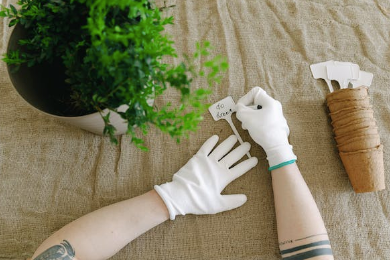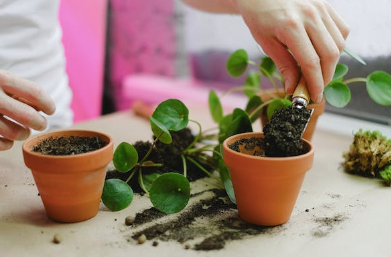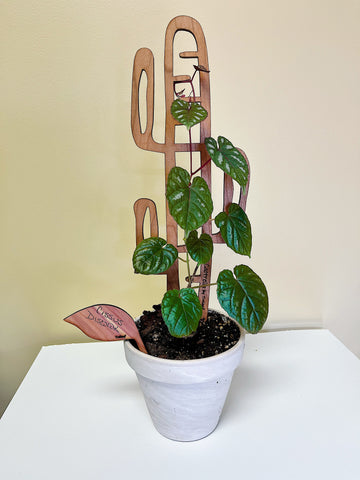Label your plants: Tricks and tips for using garden labels or plant markers for your indoor garden
Rhaphidophora tetrasperma, Hoya kastbergii, Euphorbia mammiliaris...plant names can be difficult to remember, especially when it comes to their scientific name. Which is why, I love using plant markers to help me remember both the common and the scientific name for all my plants, along with the date I got them and where they were purchased from. Labelling my plants like this not only helps me track the progress, but helps me narrow down the specific kind of care each plant needs.

An assortment of potted plants
Photo by Huy Phan
For instance, in the Hoya genus, some Hoya will grow during the fall months, when temperatures drop while other Hoya thrive in the heat of the summer. Remembering the specific species of plant you have will help tremendously when growing your plant, especially if you run into problems with growth or wanting to get a certain plant to bloom.
There's numerous amounts of ways you can use plant tags; some plant markers can add character to your plant, some can be DIY, and others can be as simple as using wooden popsicle sticks. Continue reading to learn more tips and tricks on plant labels.
Best practices for labeling your plant
When it comes to labels for plants, there's no correct method, it's just whatever works best for you. Do you want to remember where you purchased the plant, incase you have questions for the grower? Do you want to track it's growth by marking the date the plant entered your home and its' new growing conditions? Or, maybe you want to mark the last time it was fertilized to prevent over feeding?
As mentioned earlier, on my plant tags, I like to label the common name, botanical name, the grower I purchased it from and the date I received it. This helps me track the plants progress and helps me remember those complicated latin words.

Hand writing on a plant label
Photo by Thirdman
Plant markers are also great use when seed starting. The plant markers can be use to help remember what seeds were planted and the date they were sowed. It's especially helpful if you have a variety of seeds planted in a tight area.
Organize and identify your plants
Another great use for plant labels, is to help identify your plants' genus and grouping each genus together. If your collection is quickly growing, grouping each plant by genus could help make plant chore day easier. If you have a large Calathea collection, for example, grouping them together will make it easier on watering day and you could also have them under similar growing conditions. Since Calathea don't like direct light, you can have your Calathea collection a few feet away from a sunny window/grow light and have them gathered next to a humidifier.

Small plant being repotted
Photo by Anna Shvets
Types of labels available in the market
Plant markers have always been used for outdoor gardening thus leading to a huge market for plant labels in the indoor gardening world. These plant labels can be as simple as single plastic strip or as extravagant as handmade plant tags from Etsy.
Ceramic Plant Tags Bring Traditional Appeal
Ceramic plant tags are one of my personal favorite type of plant markers to purchase. I'll order a few handmade ones off Etsy with a unique design and pair it with a plant that's planted in a decorative planter. You can find an array of plant markers online that match your exact look or aesthetic.
Simple Plant Labels
Simple plant labels, like plastic strips, is the most common type of plant markers found and can easily be purchased in bulk off Amazon. These type of plant labels are great if you have a lot of plants to mark and are perfect for seed starting. They're not the most beautiful to look at, but they're easy to write on and are the most affordable option.

Photo by Judy Beth Morris on Unsplash
Painted Stones Plant Markers Add Bright Pops of Color to Your Garden Space
Painting stones as a label for your plants is a great way to add that fun DIY touch to your indoor garden. These stones can be easily found outside, or if you want a more uniform look, they can easily be purchased at any art store.
You can paint the stones a bright color for that nice pop or paint them to match the soil, to add a natural look to your plant area.
Folia plant tags
If you like the natural look of having wood and plants mixed together, I would highly recommend our Folia plant tags. These plant tags are made from cedar wood and have the perfect amount of space to write botanical names and more. These plant markers can be written on using pen or markers and the cedar is nearly rot resistant, making it perfect for all your watering sessions for years to come.

Treleaf cedar Folia plant labels in plant pot
